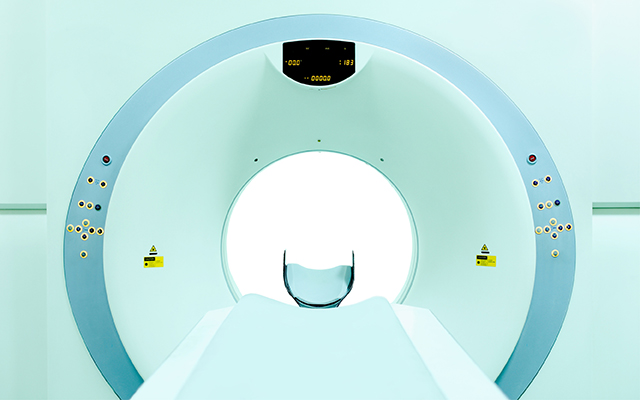We paid our last respects to my nephew Rob the other day. Just 52, he fell victim to a rare and aggressive throat cancer that could not be thwarted by surgery or chemotherapy. Five months after his diagnosis, unable to eat or drink, and with the tumor in his throat constricting his windpipe, he opted against a tracheotomy and peacefully accepted his fate.
Rob lost a good portion of his palate and tongue during what turned out to be a fruitless surgery before enduring three rounds of body-wasting chemo, so the return of the cancer simply deepened his misery. Still, it was an extraordinary gesture, one that dramatically illustrates the risk-versus-benefit equation we all must calculate when considering treatment options for a serious illness.
These are tough decisions in any situation, but there’s plenty of evidence to suggest that they become more difficult when your physician is involved.
This may seem counterintuitive. We seek out doctors, after all, because they’re specifically trained to diagnose and treat illnesses. But the language they employ when discussing options often steers us in the wrong direction. As lead author Daniel Morgan, MD, writes in a recent JAMA editorial, the traditional risk-versus-benefit conversation creates “an inaccurate comparison and may have implications for patient-physician decision-making.”
That’s because “risk” emphasizes uncertainty and “benefit” seems to be assured, Morgan explains. So, when a doctor outlines the possible downsides of a procedure and compares it with its guaranteed upside, we tend to lean toward the more certain outcome — even though the benefits may not actually outweigh the risks. “Behavioral science has shown that minor changes in language or framing can significantly alter judgments and decisions, including in healthcare settings,” he notes.
In one study Morgan cites, 69 percent of subjects preferred to postpone treatment when their ductal carcinoma in situ, or DCIS, was described simply as “abnormal cells” while 53 percent of another group opted for treatment when the same diagnosis was called “noninvasive cancer.” This mirrors a 2018 University of Sydney study, which argued that removing the “cancer” label from a low-risk condition leads to fewer unnecessary procedures.
This “language” problem may partially explain why the incidence of cancer has risen dramatically in recent years even as mortality from the disease has been declining. As H. Gilbert Welch, MD, MPH, explains in STAT News, screening protocols popularized in the 1980s — especially mammography and PSA testing — have sparked an “irrational exuberance” for early detection and a subsequent spike in overdiagnoses.
Doctors defended these actions by noting that early detection resulted in longer lives, Welch writes, even though many physicians were completely aware of the logical fallacy: Start the clock earlier in the course of a disease and your patient will always appear to live longer — even if the treatment does nothing to extend their actual lifespan. And the early-screening protocol tends to identify cancers that are either benign or so slow-growing that they will never become a threat, a phenomenon that further “proves” the life-saving benefit of the screening protocol.
“Physicians felt compelled to evaluate small spots on the kidney and thyroid that they had stumbled upon while imaging for some other purpose simply because these abnormalities might be cancer,” Welch notes. “Skin moles became a source of concern and an opportunity for biopsy. The incidence of kidney cancer doubled, thyroid cancer tripled, and melanoma went up sixfold — while their death rates remained stable.”
I doubt that changing the way doctors characterize an illness — and how they describe the pros and cons of various treatment options — will have much effect on our healthcare system’s infatuation with cancer screening. But Morgan argues that simply swapping the notion of “risk” with “harm” when discussing treatment would offer patients a clearer view of their options, which may reduce unnecessary procedures.
A patient who opts for a mammography, he explains, has a one-in-1,000 chance of preventing death by breast cancer but a three-in-1,000 chance of an overdiagnosis and a six-in-10 chance of the screening producing a false positive. “For an older woman considering breast cancer screening,” he writes, “framing the discussion around harms versus benefits rather than the more nebulous ‘risks’ might facilitate the decision to discontinue non-recommended screening.”
These are all personal, highly emotional decisions, so I don’t want to suggest there’s a simple path to a choice that will satisfy all involved — or always produce salutary results. After all, sometimes those choices are not about the patient’s well-being at all. When Mom was diagnosed with colon cancer at 80, for example, her decision to undergo surgery and chemo — and endure its debilitating effects for two years — had less to do with her desire to cling to life than the unwillingness of some in her family to let her go.
I don’t know how Rob’s doctors described his illness or what they recommended, but I’m told that he opted to suffer through what he and his wife suspected would be a series of futile procedures so his two kids and the rest of us would have time to get used to the idea of his eventual departure. When it became clear it was time to go, and his loved ones were as prepared as anyone can ever be prepared for such a thing, he was able to say goodbye on his own terms. No words can adequately describe his faith, courage, and compassion in that moment.



This Post Has 0 Comments